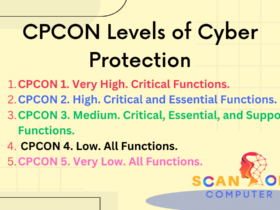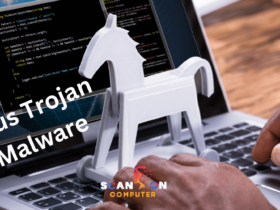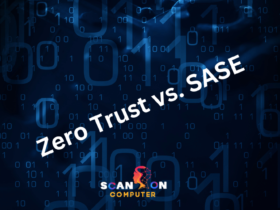Are you confident that your organization’s security defenses are robust enough to identify and remediate vulnerabilities before cybercriminals exploit them? Vulnerability management tools have become indispensable for cybersecurity professionals aiming to stay ahead of emerging threats. In this comprehensive guide, we’ll explore the top 5 vulnerability management tools of 2025, detailed features, and how they bolster your defenses against evolving cyber risks. This article is tailored for IT managers, CISOs, cybersecurity teams, and industry leaders seeking the most effective solutions to protect their digital assets.
Why Vulnerability Management Tools Matter
The landscape of cyber threats is constantly shifting. Over 21,000 new CVEs were published in 2025 alone, with exploits weaponized within hours. Vulnerability management tools are critical for continuously scanning, assessing, and prioritizing security weaknesses to prevent breaches. Effective tools help automate patch management, risk analysis, and compliance reporting.
How to Choose the Right Vulnerability Management Tools
Before diving into the top solutions, it’s essential to understand what features make a tool effective:
- Automated asset discovery to identify all devices and applications
- Real-time scanning to detect new vulnerabilities
- Risk-based prioritization to focus on critical threats
- Seamless patch management integration
- Threat intelligence feeds for emerging zero-day threats
The Top 5 Vulnerability Management Tools
-
Tenable.io
Overview: Tenable.io is a cloud-based platform renowned for its extensive vulnerability scanning capabilities, risk assessment, and compliance management.
Features:
- Continuous vulnerability assessment across IT assets
- Advanced reporting dashboards
- Integrations with SIEMs and ticketing systems
- Accurate risk scoring with CVSS
Why It’s Great: Tenable.io’s ease of use and comprehensive visibility make it ideal for large enterprises seeking scalable vulnerability management.
-
Qualys VMDR
Overview: Known for its all-in-one approach, Qualys Vulnerability Management, Detection, and Response (VMDR) simplifies vulnerability detection and patching.
Features:
- Automated and deep vulnerability scans
- Prioritized risk-based remediation workflows
- Cloud and on-premises support
- Real-time vulnerability tracking
Why It’s Great: Its ability to integrate vulnerability discovery with patch management streamlines the entire remediation process.
-
Rapid7 InsightVM
Overview: InsightVM offers real-time vulnerability management with dynamic dashboards and expansive automation.
Features:
- Live dashboards for ongoing monitoring
- Customizable remediation workflows
- Rich analytics engine
- Cloud host and on-prem support
Why It’s Great: Perfectly suited for organizations that need centralized control and rapid response mechanisms.
-
Wiz
Overview: Wiz specializes in cloud infrastructure security, providing continuous vulnerability assessment for multi-cloud and hybrid environments.
Features:
- Automated discovery and risk prioritization
- Cloud-specific vulnerability insights
- Automated threat detection
- Single-pane integration for multi-cloud
Why It’s Great: Ideal for organizations with complex cloud environments needing real-time insights.
-
Microsoft Defender for Vulnerability Management
Overview: Built into the Microsoft ecosystem, it offers vulnerability assessment directly integrated with Azure security tools.
Features:
- End-to-end vulnerability assessment
- Exploit likelihood predictions
- Integrated patching suggestions
- Seamless Azure integration
Why It’s Great: Best for organizations heavily invested in Microsoft Azure infrastructure.
| Feature / Tool | Tenable.io | Qualys VMDR | Rapid7 InsightVM | Wiz | Microsoft Defender for Vulnerability Management |
|---|---|---|---|---|---|
| Deployment | Cloud-based | Cloud & On-premises | Cloud & On-premises | Cloud native | Native Azure integration |
| Asset Discovery | Automated, comprehensive | Automated, all IT assets | Automated, live tracking | Multi-cloud & hybrid | Strong within Azure environment |
| Vulnerability Scanning | Continuous & scheduled | Automated deep scanning | Continuous monitoring | Continuous, cloud-focused | Continuous, integrated with Windows Defender |
| Risk Prioritization | Advanced CVSS-based scoring | Risk-based prioritization | Customizable risk scoring | Automated risk ranking | Exploit likelihood & risk scoring |
| Patch Management Integration | Yes | Yes | Yes | Limited | Yes |
| Threat Intelligence Feeds | Included | Included | Included | Real-time cloud threat data | Integrated with Microsoft threat intelligence |
| Reporting & Dashboards | User-friendly, detailed | Real-time & compliance-focused | Customizable dashboards | Single pane for multi-cloud | Integrated secure score & alerts |
| Ideal For | Large enterprises | Enterprises & regulated sectors | Mid to large enterprises | Cloud-native businesses | Organizations using Microsoft Azure |
| Pricing | Subscription-based | Subscription-based | Subscription-based | Subscription-based | Included with Microsoft 365 E5 or standalone |
Conclusion
Choosing the right vulnerability management tool is vital for proactive cyber defense in 2025. Whether you operate a cloud-native environment or a traditional on-prem setup, these top five solutions provide robust features to identify, prioritize, and remediate vulnerabilities efficiently.
Investing in these tools can significantly reduce your attack surface, improve compliance, and help stay ahead of cybercriminals exploiting zero-day vulnerabilities.
FAQ
Q1: What is the most important feature of vulnerability management tools?
Risk-based prioritization. It helps focus remediation efforts on vulnerabilities that pose the highest threat.
Q2: Can vulnerability management tools prevent zero-day exploits?
They primarily help identify vulnerabilities and mitigate risks but cannot fully prevent zero-day exploits. Combining tools with threat intelligence feeds and proactive patching is essential.
Q3: How often should vulnerability scans be performed?
Ideally, continuously or at least daily in high-risk environments.
Q4: Are vulnerability management tools suitable for small businesses?
Yes, many offers scaled versions or cloud-based SaaS models suitable for small to medium-sized enterprises.
Q5: How do vulnerability management tools integrate with other security systems?
Most support APIs or native integrations with SIEMs, patch management, threat intelligence platforms, and ticketing systems.
Start optimizing your security posture today by selecting a modern vulnerability management tool tailored to your organization’s needs.











Leave a Reply
View Comments